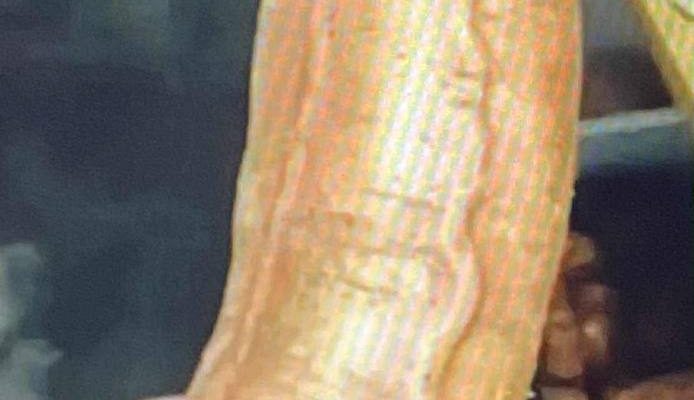The Peach Illusion: How Our Minds Play Tricks on Us
At first glance, a simple peach may not seem like the kind of object that could fool the human brain. Yet, in the age of viral images and visual illusions, even something as ordinary as a peach can turn into a fascinating case study in perception. The so-called “Peach Illusion” has taken the internet by storm—an image so deceptively ordinary that it leaves viewers second-guessing what they see. But what makes our brains misinterpret such familiar sights? Why do we “see” things that aren’t actually there? This article explores the Peach Illusion in depth and reveals how easily our minds can be tricked.
What Is the Peach Illusion?
The Peach Illusion is one of many viral optical illusions that demonstrate how our eyes and brains process color, shape, and context. The original image that sparked the craze featured what appeared to be a peach—soft, round, and slightly fuzzy—but on closer inspection, it wasn’t a peach at all. In some versions, it was a close-up photo of a person’s elbow, a blurred photo of a peach-colored balloon, or even an artistic rendering using digital textures.
The illusion became famous because so many people instantly recognized it as a peach, despite the lack of defining details like the pit, stem, or fuzz. It’s a perfect example of how the human brain fills in missing information based on assumptions, expectations, and previous experiences.
Why Our Brains Get Fooled
Our eyes don’t see the world objectively. They send raw visual information to the brain, which then interprets it based on context, memory, and learned patterns. This process is efficient but imperfect—it often trades accuracy for speed. The Peach Illusion takes advantage of that shortcut.
Here’s how it happens:
-
Color Association:
The peachy-pink gradient color immediately triggers a recognition pattern. Our brains store colors as identifiers—peach tones are automatically associated with fruit or human skin. Once that color cue is detected, the brain leaps to the most familiar explanation. -
Shape Recognition:
The rounded, slightly indented shape mirrors the contours of a peach. Humans are wired to recognize shapes quickly—a survival mechanism that helped our ancestors distinguish edible fruit from threats in the wild. -
Context Cues:
When we see the image without a clear background or scale, the brain uses assumptions from everyday experience. “It’s round and peach-colored—therefore, it must be a peach.” This is the same reason why some optical illusions can make a small object look gigantic or vice versa when context is missing. -
Top-Down Processing:
Psychologists describe this as when our expectations shape what we perceive. Rather than building an image purely from sensory input (bottom-up processing), our brains overlay expectations onto what we see. In other words, we don’t see what’s actually there—we see what we expect to see.
The Science of Seeing Things That Aren’t There
Optical illusions like the Peach Illusion highlight how vision is more interpretation than observation. Light enters the eyes, hits the retina, and sends electrical signals to the brain’s visual cortex. But that’s only the start. The brain must then interpret what those signals mean—color, motion, depth, and object identity.
This interpretive step is where perception errors occur. The brain doesn’t analyze every pixel; instead, it takes shortcuts by comparing patterns to what it already knows. It’s an incredible time-saver, but it can also produce wildly inaccurate results.
Studies in cognitive psychology show that up to 80% of what we perceive visually is reconstructed by the brain rather than directly seen. In the case of the Peach Illusion, the visual information is vague enough that the brain fills in the blanks with “peach,” even if the object isn’t one.
The Role of Familiarity and Expectation
The Peach Illusion wouldn’t work without the power of familiarity. Our brains love patterns—they’re constantly searching for recognizable forms. When something looks like a peach, even vaguely, the brain doesn’t hesitate to label it as such.
This phenomenon is known as pareidolia, the tendency to perceive familiar shapes, like faces or objects, where none exist. It’s the same mental quirk that makes people see faces in clouds or animals in shadows. Pareidolia reveals how the human brain prioritizes pattern recognition over accuracy.
So, when people first saw the viral Peach Illusion online, most instantly said, “That’s a peach.” Only after someone pointed out that it wasn’t did the mind scramble to reassess what it was really looking at. That moment of confusion—when your perception shifts—is the hallmark of a good illusion.
Why Optical Illusions Fascinate Us
Humans have always been captivated by illusions. From the ancient Greeks’ architectural tricks that made columns look straighter to modern viral photos that “break” the internet, illusions show us how unreliable our senses can be. The Peach Illusion stands out because it takes something utterly mundane and transforms it into a mental puzzle.
Our fascination with illusions comes from a deeper desire to understand how our minds work. They challenge the assumption that “seeing is believing.” In reality, seeing is interpreting, and illusions remind us that perception is fragile and flexible.
The Peach Illusion and Digital Culture
The internet has amplified our exposure to visual illusions. With millions of images shared daily, platforms like Reddit, Instagram, and X (Twitter) have turned optical tricks into viral phenomena. The Peach Illusion spread rapidly because it played on both curiosity and humor. People love realizing they’ve been fooled—it’s a harmless kind of cognitive dissonance that’s both entertaining and enlightening.
Moreover, the illusion’s success shows how digital photography blurs the line between real and artificial. High-resolution cameras, filters, and editing tools can make textures and colors so realistic that our brains can’t immediately tell the difference. The Peach Illusion is not just about perception—it’s also about the growing difficulty of distinguishing authenticity in a digital world.
Psychological Lessons Behind the Illusion
Beyond the visual trickery, the Peach Illusion offers deeper insights into human cognition:
-
Assumptions Guide Perception
We interpret new information based on what we already know. Once we form an assumption (“That’s a peach”), our brain resists correction until confronted with contradictory evidence. -
Our Brains Favor Efficiency Over Accuracy
It’s faster for your brain to assume than to analyze every detail. That efficiency is useful in daily life but also leads to frequent misjudgments. -
Context Shapes Reality
The same object can appear entirely different depending on lighting, surroundings, and expectation. Change the context, and perception shifts instantly. -
Curiosity Is a Cognitive Reset
When illusions surprise us, they force us to slow down and observe more carefully—a valuable exercise in mindfulness and attention.
How to Train Your Brain Against Visual Deception
While we can’t stop our brains from making quick judgments, we can train ourselves to see more critically. Here are a few ways to sharpen perception:
-
Pause before concluding. Ask yourself what visual cues you’re relying on—color, shape, shadow, or context.
-
Compare and contrast. If something looks odd, look at it from different angles or distances.
-
Learn about illusions. Familiarity with visual tricks makes you less likely to fall for them in the future.
-
Stay skeptical online. Many illusions—and misinformation—rely on our instinct to trust what we see. A questioning mindset helps you see beyond appearances.
The Beauty of Being Fooled
While illusions expose our cognitive flaws, they also highlight the brilliance of the human mind. The fact that we can be tricked so easily shows just how powerful and complex our perception systems are. The Peach Illusion reminds us that our brains are not perfect cameras—they’re storytellers, constantly interpreting and reconstructing the world.
When we laugh at being fooled by a simple image, we’re really celebrating the wonder of human perception. Every illusion is a small window into how our minds work—a dance between sight and thought, between reality and imagination.
Final Thoughts
The Peach Illusion may be a simple trick of color and shape, but its impact is profound. It teaches us that seeing isn’t always believing, and that the truth of what we perceive is shaped as much by our minds as by our eyes. In a world overflowing with digital images, illusions like this one remind us to slow down, question what we see, and appreciate the mysterious ways our brains construct reality.


